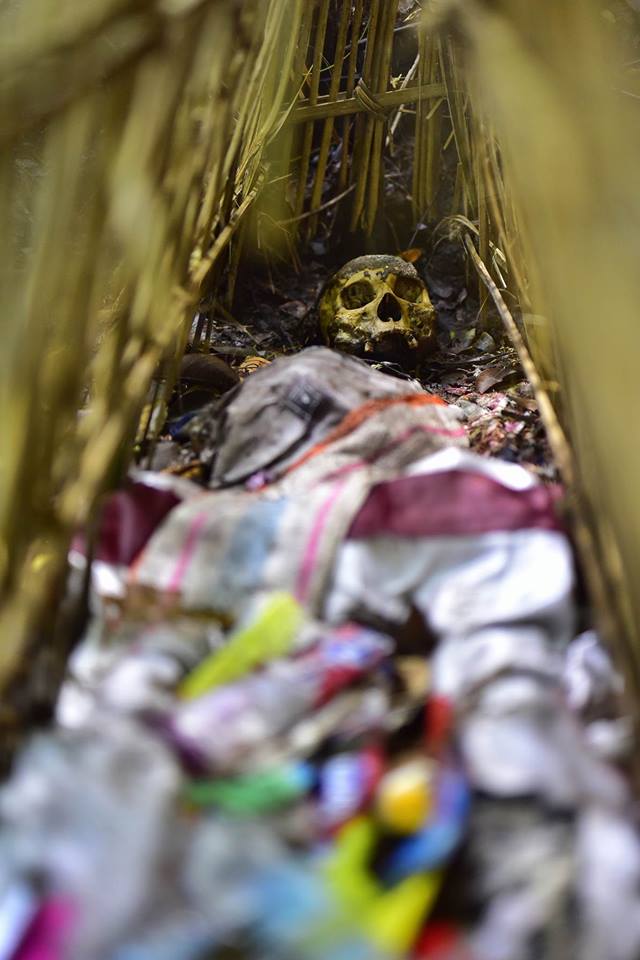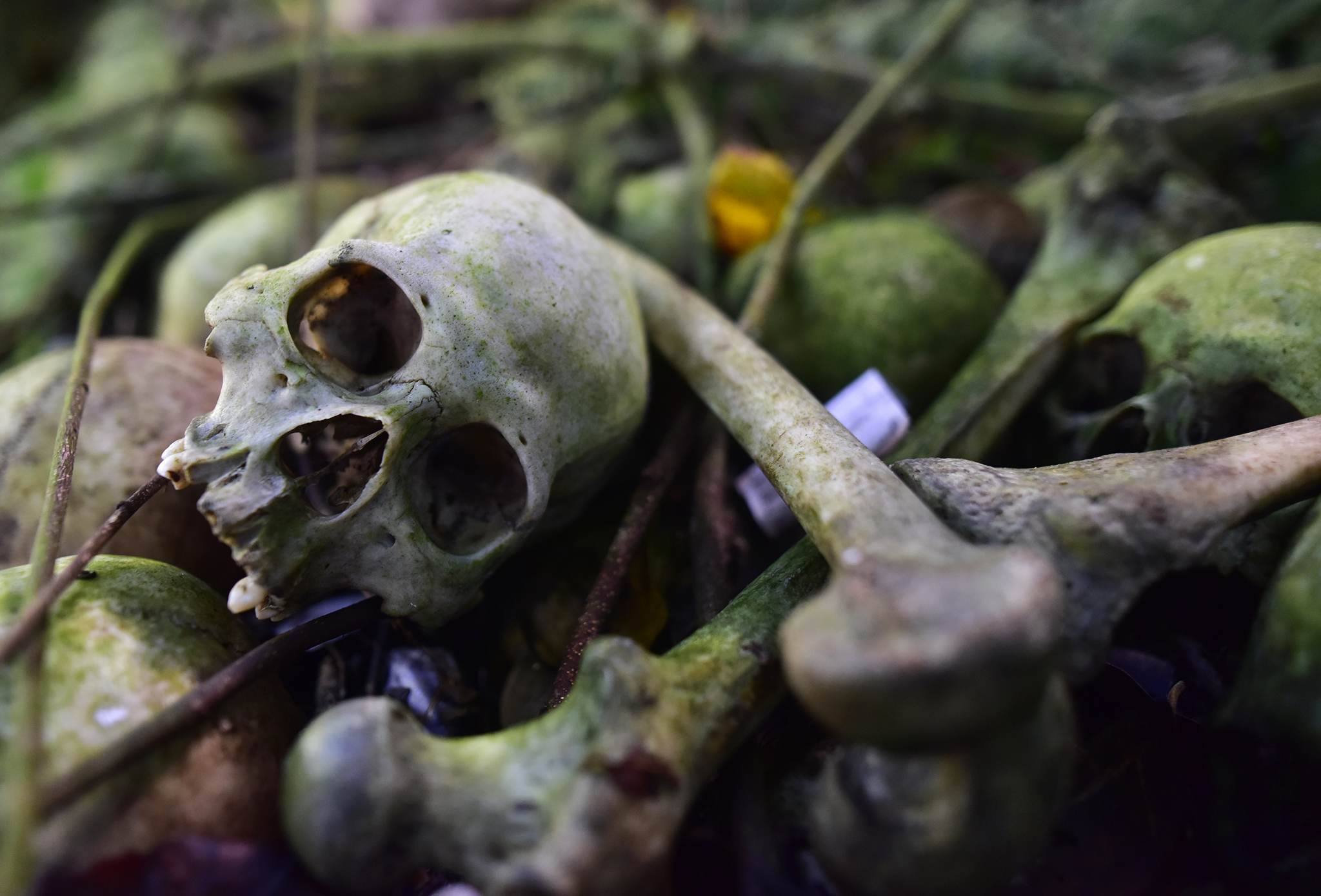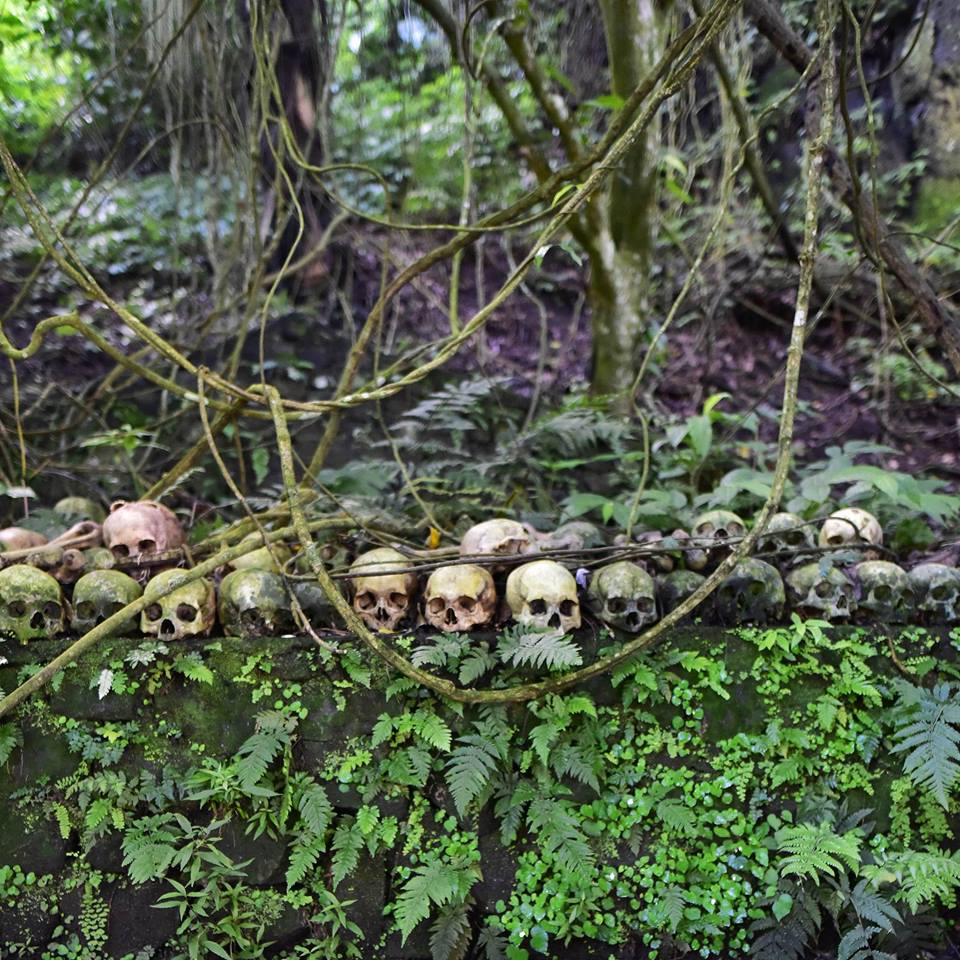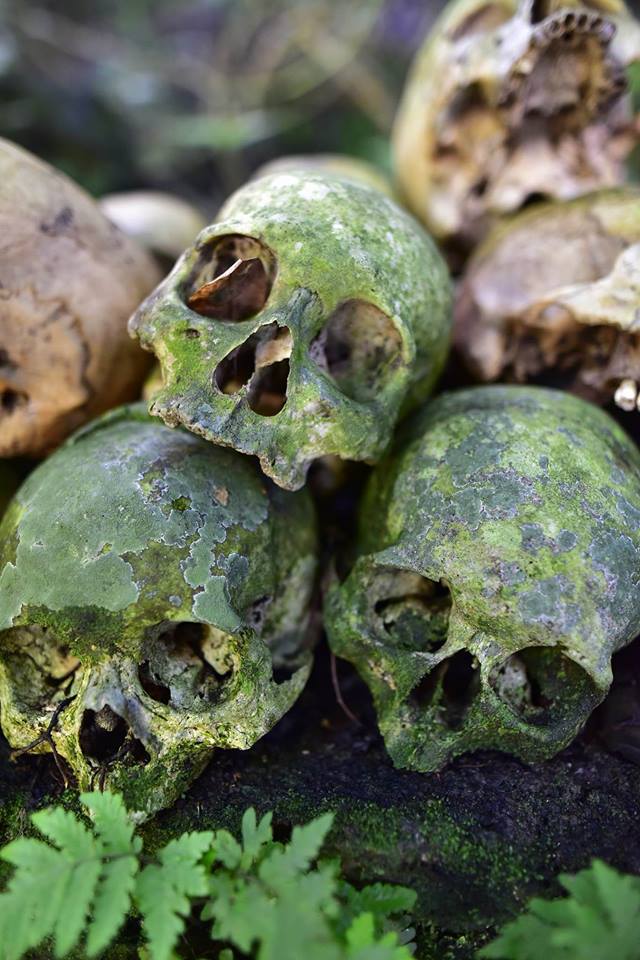The small village of Trunyan sits on the eastern shore of Bali’s Lake Batur and in the shadow of the island’s most famous volcano, Mt. Batur. This area is less than two hours from the tourist hubs of Ubud and Kuta, but by Balinese standards it is remote and it seems a world away from the bustle of those cities. Things are different here. Trunyan and the surrounding villages are tranquil, and traditional ways of life linger largely unchanged.
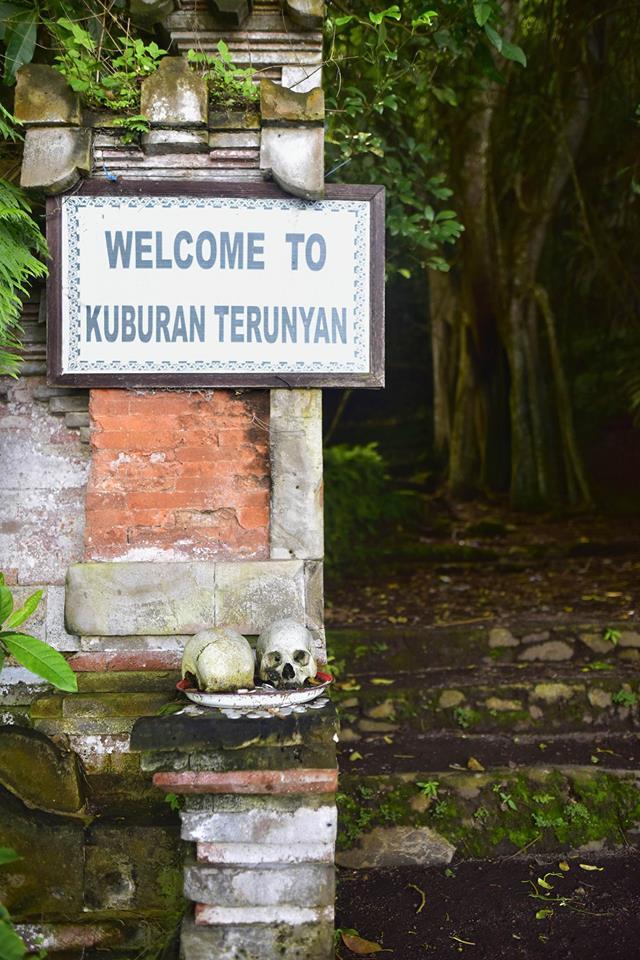
Visitors come only in a trickle, maybe a handful a day. And those who come are following a different itinerary than those who seek in Bali a tropical paradise, because the idyll that the island represents for foreigners is here given rebuke by Trunyan’s greatest tourist attraction, its unique cemetery. Throughout the rest of Bali, the dead are cremated, but in Trunyan mortality openly confronts paradise with a visible spectacle of human decay.
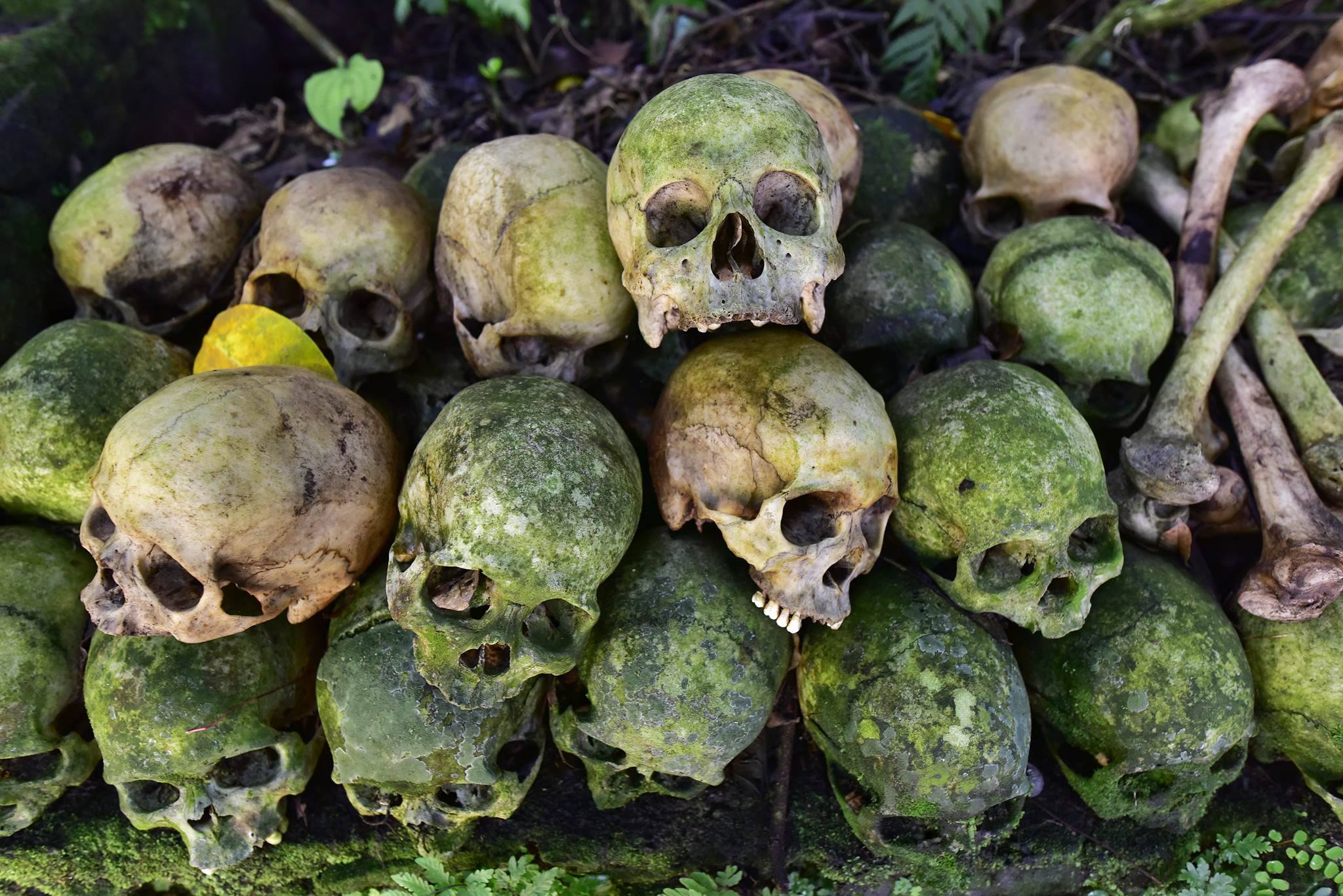 Situated on the lake shore and surrounded by dense jungle, the cemetery is accessible only by boat. Those arriving find an offering plate and pair of skulls waiting to greet them as a precursor to the hundreds more that are waiting on the cemetery ground itself. The people of Trunyan administer not so much a cemetery as a large charnel ground where hundreds of moss green skulls are visible around and atop a stone ledge, and unknown quantities more lie in the thick brush of the surrounding jungle. And in an opening adjacent to the wall, crude latticework bamboo cages stand in a row and hold still rotting corpses, some fresh enough to identify facial details, others far along enough in decay to be scarcely more than skeletons. This is the Trunyan way: the body is allowed to publicly rot, and when that process is complete the bones are added to the pile containing those of their relatives and fellow villagers.
Situated on the lake shore and surrounded by dense jungle, the cemetery is accessible only by boat. Those arriving find an offering plate and pair of skulls waiting to greet them as a precursor to the hundreds more that are waiting on the cemetery ground itself. The people of Trunyan administer not so much a cemetery as a large charnel ground where hundreds of moss green skulls are visible around and atop a stone ledge, and unknown quantities more lie in the thick brush of the surrounding jungle. And in an opening adjacent to the wall, crude latticework bamboo cages stand in a row and hold still rotting corpses, some fresh enough to identify facial details, others far along enough in decay to be scarcely more than skeletons. This is the Trunyan way: the body is allowed to publicly rot, and when that process is complete the bones are added to the pile containing those of their relatives and fellow villagers.
This display makes Trunyan far and away Bali’s most intriguing cemetery, but a lack of record keeping by locals and a paucity of research by outsiders has made it impossible to accurately trace its history. Accounts of the site offered by villagers vary wildly, but they all agree that burials here date back a very long time, with some dating the period in centuries, others in millennia. While such responses come across as exaggerated guesswork, they may not be entirely without substance.
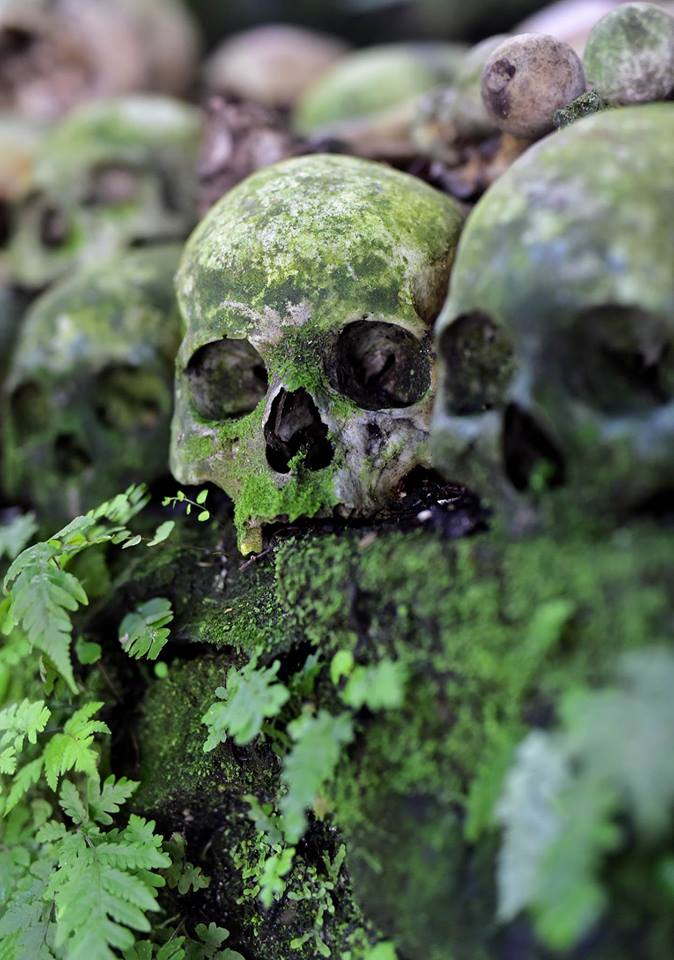 When the Hindu Majapahit Empire invaded Bali in the first half of the fourteenth century, most of the island was conquered, save for the area around Trunyan, which held out as the lone place in which external customs and belief systems were not imposed. The locals here consider themselves the Bali Mula, or the authentic Balinese, indigenes who have for centuries preserved the original culture of the island. In terms of Balinese funerary practice, cremation was a foreign custom brought by the Hindus, but it never caught on in Trunyan since it was believed that Mt. Batur was a kind of fire god and considered humans burning the body to be a usurpation of his authority
When the Hindu Majapahit Empire invaded Bali in the first half of the fourteenth century, most of the island was conquered, save for the area around Trunyan, which held out as the lone place in which external customs and belief systems were not imposed. The locals here consider themselves the Bali Mula, or the authentic Balinese, indigenes who have for centuries preserved the original culture of the island. In terms of Balinese funerary practice, cremation was a foreign custom brought by the Hindus, but it never caught on in Trunyan since it was believed that Mt. Batur was a kind of fire god and considered humans burning the body to be a usurpation of his authority
Thus while tourist websites and guidebooks typically consider the display of corpses and bones at Trunyan as an eccentric custom that seems out of place on Bali, the truth is exactly opposite. What goes at Trunyan is as authentically Balinese as it gets: it’s an indigenous funerary custom that may date all the way back to the Neolithic sects that introduced agriculture and tool making to the island. For the early inhabitants around Lake Batur, the essence of native spirituality was in attaining equilibrium between the visible and non visible, the natural and supernatural. They considered an open confrontation with death and the visible action of the body being reclaimed by the earth to have a natural place in such a system, and at Trunyan that tradition still perseveres and provides a window onto a custom was once much more widely spread.
There are other misconceptions about the Trunyan cemetery. In fact, it is not the only resting place used by the villagers. It is the primary cemetery and considered the “normal” one, for people whose deaths do not involve unusual or unexpected circumstances. Basically, this means it is the final resting place specifically for people who die from old age, conditions which are associated with being elderly, and various common maladies. But two other small cemeteries are also maintained. One is for people who die due accident or foul play. Their deaths are considered to be polluted, and their spirits unfulfilled, in distress, and potentially hostile. The other cemetery is for babies and young children, who are considered to be god-like due to their lack of worldly corruption.
The idea that the bodies are left out to rot is also deceptive. In the two smaller cemeteries, the deceased are buried, and even in the principal cemetery not all bodies are left out–unmarried people are supposed to be buried here, although this is in fact a very rare occurrence since the overwhelming majority of locals take a spouse. And in the case of the corpses seen openly decomposing, there is a motivation beyond simply watching nature take its course. The real point of this custom is to place the dead under the protection and auspices of a large banyan tree that is considered sacred. This special tree, which towers over the cemetery ground, serves as a home for the spirits of the dead. It also emits a perfumed odor which was considered so notable that it garnered for the tree in the distant past the name Teru Manyan, literally meaning “nice smell”–that name has since been shortened to Teruyan, the very word from which Trunyan derives.
In other words, this tree is of such importance in local folklore and spirituality that the entire locale is named after it, and its famous scent is said to have the power to sweeten even the stench of rotting flesh. Whether or not one chooses to believe the scent is supernatural, it is nevertheless true that the tree and the blanket of leaves it drops mask the odor of the cemetery’s corpses. The result is a consistently fresh and clean scent–and proof for the locals of the magical properties of both the tree and the cemetery.
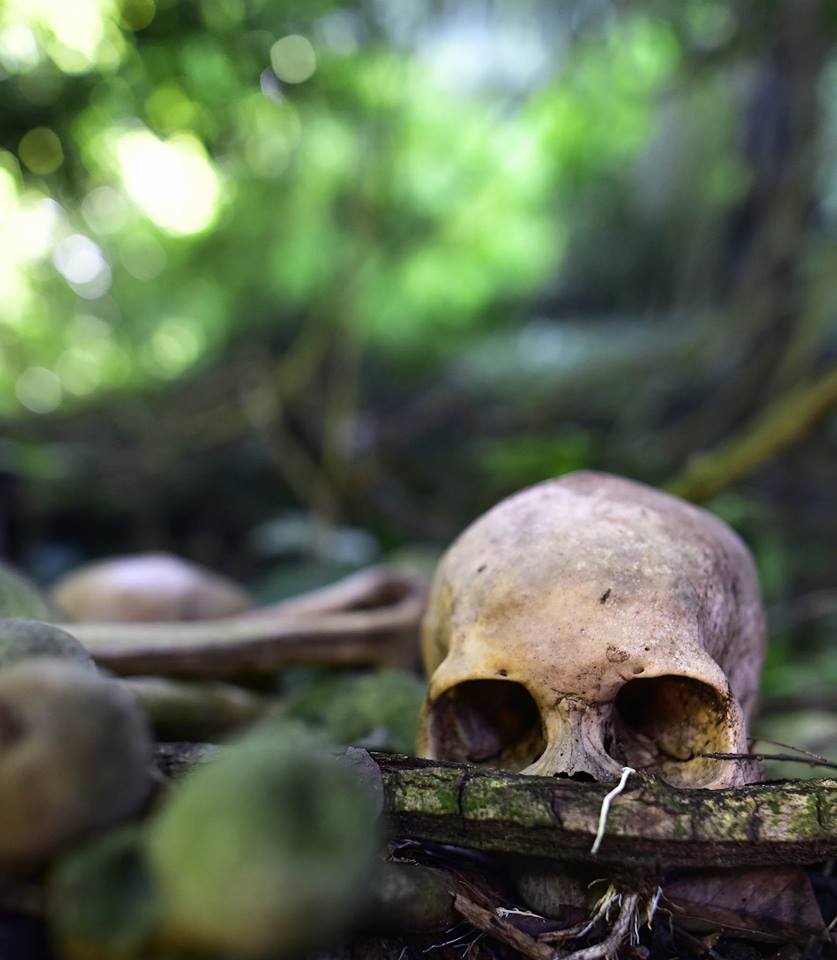 The deceased brought to this blessed ground can only enter on what are considered propitious days. Due to complexities within the Balinese calendar system (there are simultaneously two calendars, one of 210 days and the other a twelve month calendar based on phases of the moon), this could mean a waiting period in the home of up to a month. According to local mythology, Mt. Batur disapproves of women moving corpses, and a natural disaster might occur if they are involved, so only men are allowed to carry the body. The men who bring the deceased to the cemetery will also dig a shallow indentation around the contour of the corpse, to help it decompose into the soil. The triangular latticework cages will then be erected, to keep birds who feast on carrion from pecking at the body.
The deceased brought to this blessed ground can only enter on what are considered propitious days. Due to complexities within the Balinese calendar system (there are simultaneously two calendars, one of 210 days and the other a twelve month calendar based on phases of the moon), this could mean a waiting period in the home of up to a month. According to local mythology, Mt. Batur disapproves of women moving corpses, and a natural disaster might occur if they are involved, so only men are allowed to carry the body. The men who bring the deceased to the cemetery will also dig a shallow indentation around the contour of the corpse, to help it decompose into the soil. The triangular latticework cages will then be erected, to keep birds who feast on carrion from pecking at the body.
There is room for eleven bamboo cages on the cemetery ground–the number eleven is considered powerful in local numerology (the local temple has likewise eleven pagodas), so more than that are not permitted. If a twelfth is needed, the oldest corpse will have its remains moved to the pile. In practical terms, given that only a couple thousand people live among the villages that use the cemetery, it is rare that space will be needed for more than eleven fresh bodies at one time, and under normal circumstances the bones will be moved to the charnel ground when it is decided the flesh is thoroughly decomposed. In the heat and humidity of the jungle, this can happen in about a year.
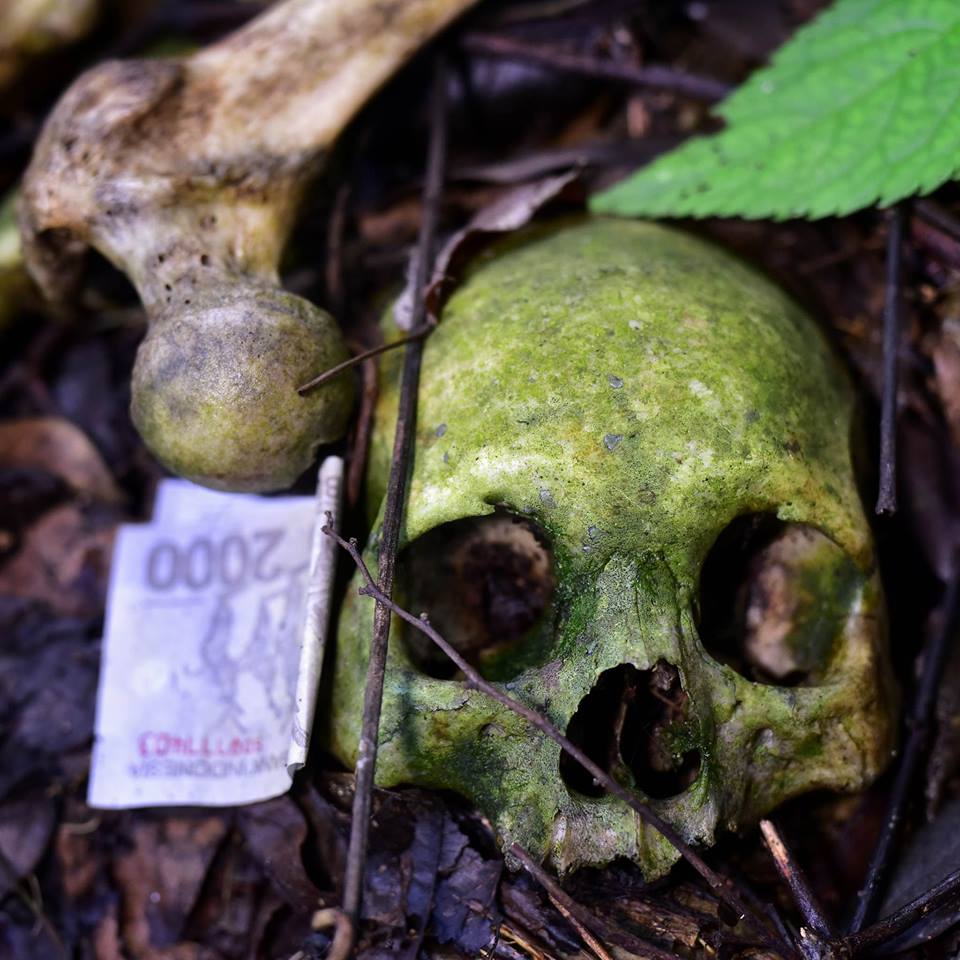
As a notable curiosity on an island with a huge tourist industry, the Trunyan cemetery has over the past few decades received increasing numbers of visitors. In the process it has inadvertently wound up causing a certain amount of consternation–not so much among the Balinese, but with foreigners. The villagers charge outsiders to see the grounds, and many visitors have found their prices to be extortive. Some tourists have expressed disgust, both in online forums and in print, with what they consider unfair fees demanded by the locals, and the best selling tourist guidebook to Bali, published by Lonely Planet, has in the past even gone so far as to declare Trunyan unwelcoming and urged people to not go there. In the most recent edition, the issue of “huge fees” is still enough of a sticking point that the book advises its readers to pass on the cemetery, writing off a fascinating indigenous funerary tradition as merely a “ghoulish spectacle.”
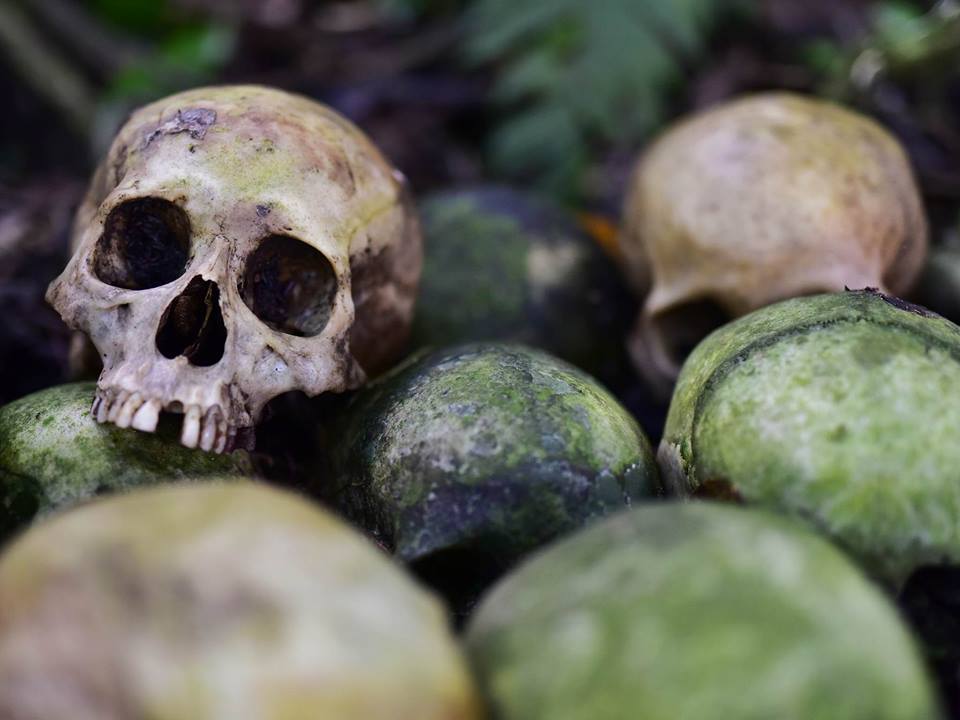 Considering this negative reaction, it’s important to provide a context for the fees that are charged. Technically, they are not for entry to the cemetery, but payment for the boat ride. In the past, the boat would have to go a long distance across Lake Batur, but a modern road leads directly to the center of the Trunyan so the ride is now quite short. Nevertheless, those who wish to see the cemetery are currently asked for upwards of 50 US dollars or more, and villagers are unlikely to negotiate far below their initial price, using the claim that the government owns the boat and there are certain fees the locals themselves have to pay for its use.
Considering this negative reaction, it’s important to provide a context for the fees that are charged. Technically, they are not for entry to the cemetery, but payment for the boat ride. In the past, the boat would have to go a long distance across Lake Batur, but a modern road leads directly to the center of the Trunyan so the ride is now quite short. Nevertheless, those who wish to see the cemetery are currently asked for upwards of 50 US dollars or more, and villagers are unlikely to negotiate far below their initial price, using the claim that the government owns the boat and there are certain fees the locals themselves have to pay for its use.
Those who complain are correct in pointing out that in terms of the local economy this is a relatively steep price, although in global terms it seems unfair to consider such amounts as extortive. And it is in fact true that the government gets a cut. The office in charge of local tourism does own the boat and the amount going to the village is only 60 percent of what is paid. In addition, the same office has expressed a concern about the potential deleterious effects of allowing tourism to develop too rapidly at the Trunyan cemetery, thus providing a further incentive not to lower the prices charged to outsiders, with the idea being that it is in the cemetery’s best interests to receive fewer tourists paying a higher price than to have a deluge of them paying only a few dollars.
Some Westerners have also expressed anger over other visitors playing with the skulls, moving them, and holding them up in order to pose for selfies in order to shock their friends back home. This concern, which is no doubt well intentioned, is misplaced The locals don’t particularly mind people handling the bones of their ancestors, and will in many cases encourage it. Their attitude towards visitors photographing themselves with the skulls is less one of offense than it is amusement that outsiders find the encounter with these bones to be somehow shocking.
Which all comes back to the Trunyan attitude towards the dead. Even sympathetic Westerners don’t quite understand. There is love here and reverence, but the encounter does not violate a taboo. The cemetery ground returns the villagers to the elemental forces from which they came, but it does not extinguish them. The dead are still present, their spirits cradled by the magical banyan tree, and for the villagers the encounter with them is a natural and social one. As for the bones, yes they are important, but they are also a mere a symbol, left behind to remind visitors of the cycle of life and death.
All photographs by Paul Koudounaris
Paul Koudounaris is an author and photographer in Los Angeles. His PhD in Art History has taken him around the world to document charnel houses and ossuaries. His books of photography include The Empire of Death and Heavenly Bodies, which features the little known skeletons taken from the Roman Catacombs in the seventeenth century and decorated with jewels by teams of nuns. His other academic interests include Sicilian sex ghosts and demonically possessed cats.

